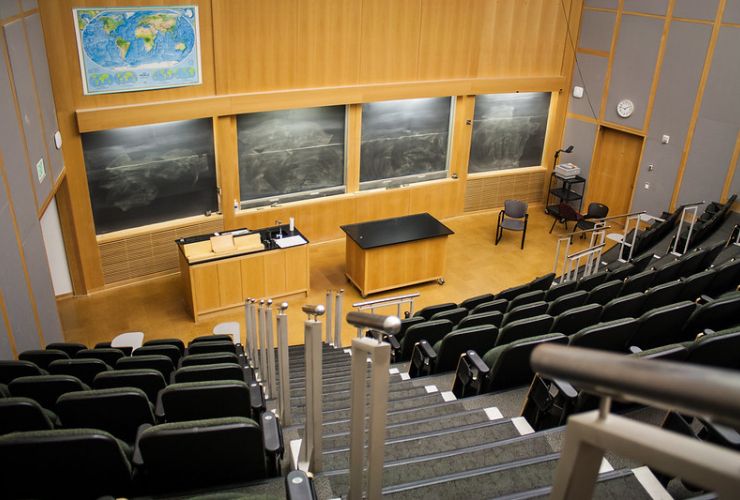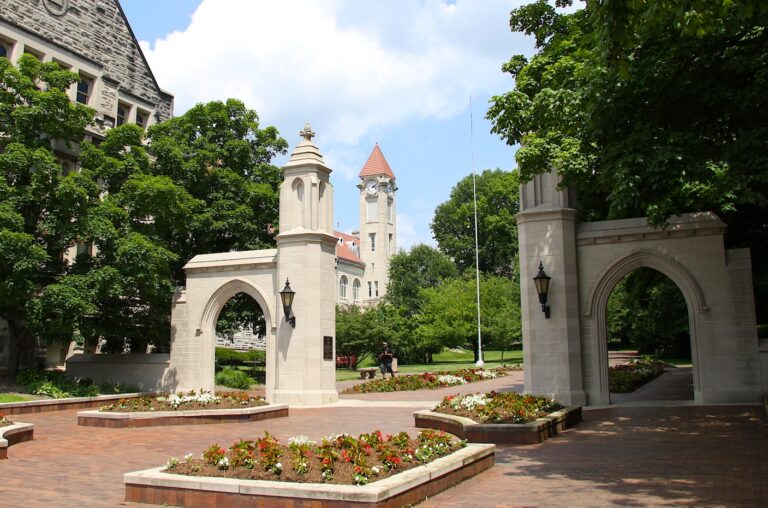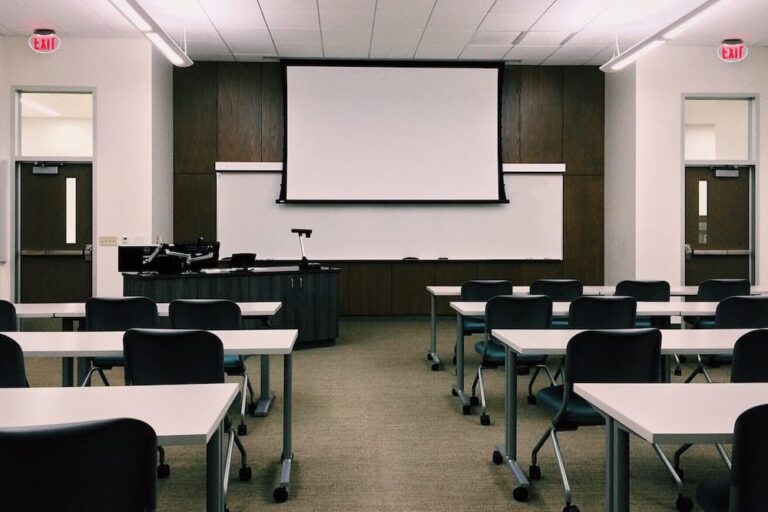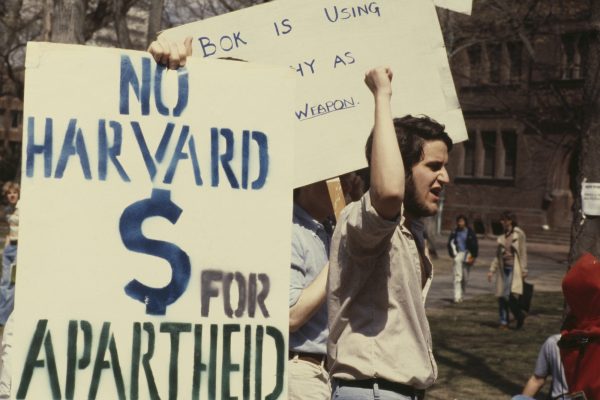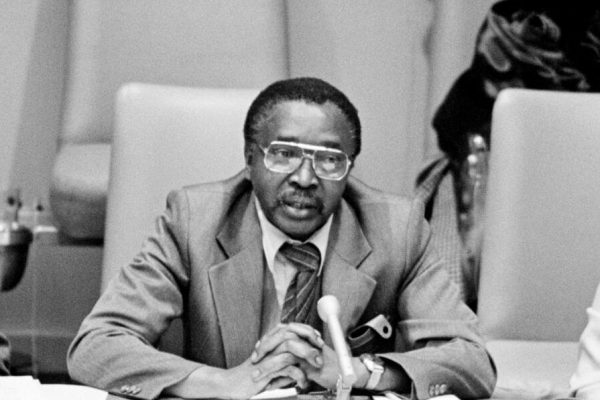The coronavirus is taking a sledgehammer to higher education in the United States, shattering the established configurations, norms, and rituals of colleges and universities across the country. Besides overturning the very structure of education virtually overnight, transforming physical classrooms into digital ones, it will also accelerate a number of troubling longer-term trends, including public disinvestment in state colleges and universities, a growing gap between higher ed haves and have-nots, and the migration of courses and degrees online. Anyone who cares about education as an engine of social mobility and a tool to broaden our horizons needs to pay attention.
There are over four thousand institutions of higher education in the United States enrolling some twenty million students; 40 percent are private, 39 percent are public, and 21 percent are for-profit. The landscape is remarkably diverse in size, structure, and mission. Small liberal arts colleges such as Kenyon (enrollment 1,700) co-exist alongside giant state flagships such as Ohio State (enrollment 68,000) and for-profit behemoths such as the University of Phoenix (with nearly 102,000 online students). That’s not to mention private universities, community colleges, Christian colleges, historically black colleges, tribal colleges, women’s colleges, and still other kinds of institutions.
If past is prologue, the Great Recession is a cautionary tale for higher education in the age of coronavirus. The immediate financial shocks of the financial crisis trimmed state spending by about 5 percent, diminished donations by more than 10 percent, and gutted endowment returns by 23 percent on average. State funding still has not recovered to pre-recession levels; between 2008 and 2018, the average state spending per student decreased by 13 percent, or $1,200, even after adjusting for inflation. In six states—Alabama, Arizona, Louisiana, Mississippi, Oklahoma, and Pennsylvania—per student funding dropped by more than 30 percent.
The stakes are high. Though you wouldn’t know it from disproportionate media coverage of private universities, public colleges and universities educate nearly 72 percent of postsecondary students, and they are highly dependent on public funding. State revenue provides 21 percent of public college and university revenue, followed by tuition and fees (20 percent), federal revenue (13 percent), investment revenues (9 percent), and other sources. State and federal revenues represent different funding streams, with the former channeled primarily to general operations and the latter to financial aid for individual students and to specific research grants. Public colleges and universities responded to the Great Recession with a variety of cost-saving measures, including reducing course offerings, cutting back on student services, and hiring more part-time faculty. But most importantly, they raised tuition.
The sticker price of public institutions shot up almost 40 percent in the decade following the housing crisis, contributing to a nearly 25 percent jump in the net price—published tuition and fees, room and board, books and supplies, minus financial aid—at four-year public institutions. The average net price of college has increased for families in every income bracket over this same period. At four-year public schools, the cost of college accounts for almost a quarter of the typical student’s household income. Pell grants provide a vital means of financial support for many low-income students, but they cover a “shrinking share of college costs,” from more than three-quarters in 1975 to less than a third today.
The stage has thus been set for a fiscal reckoning, and indeed the news rolling in is already grim. In March Moody’s downgraded its higher education outlook from “stable” to “negative,” anticipating significant disruptions in “enrollment, state support, endowment income, philanthropy and research grants.” Colleges and universities are projecting massive revenue losses this year, as a result of everything from room-and-board refunds and plunging endowment values to the costs incurred by moving courses online—$100 million at Johns Hopkins University, up to $315 million at the University of Minnesota, and a staggering $400 million to $1 billion for the University of Michigan system. Several universities have already applied for hefty credit lines, including Cornell, DePaul, and Ursinus.
There is overwhelming agreement among experts that “higher education is going to be at the front lines of the economic fallout from coronavirus.” After K-12 and Medicaid expenditures, higher education is the third largest line item in state budgets. And it is by far the biggest pot of fungible funds. K-12 funding has more strings attached than higher education does, while states are loath to cut Medicaid because it receives matching federal funds—a reluctance that will only intensify with coronavirus. On top of it all, legislators figure colleges can always make up for shortfalls by raising tuition.
In fact, coronavirus arrived smack in the middle of many states’ budgeting sessions, and the status of budgets for the next fiscal year ranges from a state of flux to one of disarray, as state tax revenues vaporize. Bracing themselves for future austerity measures, many higher education leaders are already freezing new hires, introducing pay and benefit cuts, and issuing furloughs and layoffs. At the University of Arizona, the vast majority of university employees will be furloughed for some period of time (up to 39 days) between now and June 2021. Voluntary salary reductions of 10–20 percent for senior leadership have been announced at a wide range of schools, including Brown, Stanford, the University of Missouri, and the University of Southern California. Retirement contributions have been suspended at Bates College, the University of Louisville, Sacred Heart University, Johns Hopkins, and other institutions. Meanwhile, funds for what remains of this fiscal year are disappearing.
In Missouri, for example, Republican governor Mike Parsons announced $73 million in current fiscal year cuts to funds that had been earmarked for community and four-year colleges. In New Jersey Democratic governor Phil Murphy lopped off $122 million in higher education funding for this fiscal year, including $73 million from Rutgers. In Indiana Republican governor Eric Holcomb hit the pause button on plans to spend $300 million on construction projects at state universities.
The fact that twenty-nine state legislatures are currently under Republican control bodes poorly, to put it mildly. As reported last year in the Chronicle of Higher Education, conservative policy wonks, pundits, advocacy groups, and politicians are increasingly “taking aim at colleges’ autonomy and attempting to set campus policy.” This is due in part to the example set by Scott Walker whose aggressive approach to reshaping higher education in Wisconsin resulted in a $250 million cut to the state’s university system budget and the dramatic erosion of tenure protections for University of Wisconsin faculty members. Walker even suggested that lawmakers remove the “search for truth” from the university’s charter, replacing it with the mission to “meet the state’s workforce needs.”
What beliefs drive these attacks? A 2017 Pew survey captured growing Republican discontent with U.S. colleges and universities when it found that 58 percent of Republicans said colleges and universities have “a negative effect on the way things are going in the country.” A subsequent 2018 Pew poll reported that 73 percent of Republicans agreed that “the higher education system in the U.S. today is generally going in the wrong direction.” (Just over half of Democrats endorsed this assertion.) Among those who said higher education was heading south, Democrats and Republicans alike cited high tuition costs and inadequate job preparation as key factors.
Just as worrisome for Republicans, however, were concerns about the suppression of free speech and ideological indoctrination. As a close observer of campus free speech controversies, it is clear to me that every story about the real or perceived censorship of conservative views on campus is like a shot of adrenaline directly into the veins of the rightwing media, from the rabble-rousing talking heads on Fox News to the more genteel voices featured in National Review. The fear that liberal bias pervades academe looms large in the psyche of conservative culture warriors.
Last fall, for example, Tennessee Republican state legislator Kerry Roberts ranted about the college campus as a “liberal breeding ground” where the public pays for “garbage to be taught to our children.” “If there’s one thing that we can do to save America today,” he said, “[it’s] to get rid of our institutions of higher education right now.” Mix conservative skepticism about the value of higher education with escalating health care costs and you’ve got a dangerous recipe for public higher education. What kind of appetite will there be for many states to invest in it beyond the absolute, bare minimum?
Future enrollment is a big worry and a massive X factor for publics and privates alike. Dips in enrollment can be catastrophic for colleges that are heavily dependent on tuition. Eighty-four percent of college presidents anticipate enrollment drops, both for new and returning students, according to a recent survey. A poll of collegebound high school seniors found that one in six said it was likely they would change their plans of enrolling at a four-year college or university in the fall as a result of coronavirus. Even the normally bullish president of the Council of Independent Colleges, Richard Ekman, has acknowledged that some small colleges are facing existential threats. Looking at the full landscape of higher education in light of the coronavirus, University of Pennsylvania professor Robert Zemsky, co-author of the new book The College Stress Test, has doubled his estimate of the proportion of colleges facing severe financial challenges from 10 percent to 20 percent. “We’re now going to have upward of 20 percent really terrified,” Zemsky said. “That’s not to say 20 percent are going to close but it ups the possibility.”
Considering all this, the fallout from the coronavirus will almost certainly exacerbate the already yawning gap between higher education’s haves and have-nots.
When it comes to endowments, what the sociologist Robert Merton called the Matthew effect—“the rich get richer”—is the order of the day. Endowment assets are concentrated at the top, with 75 percent of all assets held by just 12 percent of institutions. More than 60 percent of the value of total gifts in the 2018 fiscal year went to the 23 institutions with endowments larger than $5 billion—schools like Harvard, MIT, and Duke. The $500 million and up club is larger, with almost 200 institutions, including the likes of Michigan State, Liberty University, Williams, and the University of Oklahoma. In stark contrast to the wealthiest institutions, at least a quarter of all colleges and universities have endowments totaling less than $50 million. The median endowment at the some 100 private and public historically black colleges and universities is $12 million.
Endowments, as many higher leaders have been at pains to highlight, are not simply reservoirs of money that can be tapped at will. Designed to provide stability for long-term financial planning, they are used to support everything from student financial aid and faculty positions to research institutes and public service initiatives. A single endowment is really a collection of hundreds or thousands of individual gifts, most of which have donor-imposed, legally binding restrictions on how the funds are used. (Johns Hopkins, for instance, cannot decide that Michael Bloomberg’s $1.8 billion donation to support student financial aid would be better spent on a new football stadium.) In addition, there are almost always tight rules and regulations governing the overspending of endowments. In many states the annual upper limit is 7 percent of the overall value. With trustees typically responsible for overseeing the purse strings, most colleges and universities have an annual spending rate between 4 and 5 percent.
Constraints notwithstanding, schools with large endowments are obviously still in much better positions to weather fiscal storms—wealthy schools with prestigious brand names even more so, as they can draw from a deep applicant pool that extends not only nationwide but across the globe. Selective schools will “only grow stronger as the market further consolidates.” Money and prestige, of course, confer advantages in terms of higher quality facilities and student services—advantages that can translate into better student outcomes such as higher graduation rates.
In addition, the most selective schools have largely been able to avoid the turn to adjunct faculty to fulfill essential teaching duties. More than 40 percent of faculty members at all two-year and four-year colleges work part time. An American Association of University Professors survey found that non-tenure track appointments increased from 10 percent of all full time faculty positions in 2008–2009 to 27 percent in 2018–19. When colleges and universities use part-time faculty to balance their budgets, they run the risk of weakening faculty governance, diminishing academic freedom, and sinking morale. Educational quality too can suffer, through grade inflation and lower retention.
The coronavirus will also put additional financial strains on low-income students and students from underrepresented populations. Race, family income, and parental education are all powerful predictors of college attendance rates. While 84 percent of Asian Americans and 75 percent of whites enroll in a postsecondary institution, only approximately 60 percent of blacks and Hispanics do. Nine in 10 children with family incomes above $100,000 access postsecondary education, compared to 6 in 10 of children with family incomes below $50,000.
And significant enrollment gaps by income remain even among young people with similar academic records and test scores. A 2017 New York Times feature, which cast a spotlight on the glaring lack of economic diversity at many of our nation’s top schools, identified 38 schools where more students came from the top 1 percent (family income of $630,000 and up) than the entire bottom 60 percent (family income of less than $65,000). Children from higher-income families (top 13 percent of income distribution, more than $130,000 in 2016 dollars) comprise about a third of the student body at elite institutions. They are of vital importance to the high tuition/high aid economies of selective institutions in which affluent students pay full or close to full freight so that middle and low-income students may receive more generous discount rates.
Indeed, tuition increases reduce both economic and racial diversity on college campuses, especially at non-selective institutions. Conversely, targeted financial aid to these same populations can increase retention and graduation rates. On average, a $1,000 increase in a student’s financial aid package is associated with a nearly 10-point decrease in the chances she will drop out of college.
The implications for inequality are clear. Low-income students and students of color are much more likely to borrow to cover college costs. (Eighty-five percent of African Americans in the class of 2016 graduated with debt, compared to just under 70 percent of whites.) Higher debt burdens frequently mean higher default rates. And fewer college-going youth from low-income and historically disadvantaged student populations translates into fewer opportunities to climb the economic ladder. Work done by Opportunity Insights, a research and policy analysts team based at Harvard, has shown that at any given college, students from low- and high-income families have similar earnings outcomes: “In this sense,” the group explains, “colleges successfully ‘level the playing field’ across enrolled students with different socioeconomic backgrounds.” There are many colleges where students enter poor and leave “on their way to the middle class and often the upper middle class.”
Beyond the stark fiscal crisis, we are also in the midst of the biggest online learning experiment in human history, from virtual kindergarten classrooms to web-based college seminars. One thing that everyone seems to agree on regarding the future of higher ed is that online education is going to become much more prevalent. It is a vital public health measure at the moment, but it will be especially attractive to cash-strapped institutions and students in the coming years. According to the most up-to-date pre-coronavirus figures, 59 percent of undergraduates receive in-person only education, 35 percent a hybrid of online and in-person, and 6 percent online only.
Online education is the fastest growing sector in higher education. Southern New Hampshire University’s enthusiastic embrace of online education has resulted in an astonishing growth in student enrollment from about 6,500 in 2007 to over 100,000 today. For-profit schools are heavily represented in the online higher ed space. Among the 3 million fully online students, nearly a quarter are enrolled in for-profits. In addition to the University of Phoenix, the big players include Grand Canyon University, Walden University, and Ashford University.
The umbrella of for-profit online higher education should be understood and analyzed as its own distinctive category that transcends the medium of instruction. As sociologist Tressie McMillan Cottom documents in her revealing 2018 book Lower Ed: The Troubling Rise of For-Profit Colleges in the New Economy, for-profits appeal to and absorb all manner of “vulnerable” student populations looking for fast-entry, flexible, vocationally oriented programs, including “single mothers, downsized workers, veterans, people of color and people transitioning from welfare to work.” McMillan lists the following damning litany of problems associated with for-profit schools: “high debt, loan defaults, regret, broken public trust, low wages and little to no mobility from Lower Ed to Higher Ed.” For-profit colleges only graduate 21 percent of their first-time, full-time students within six years. They are, Cottom concludes, predatory in effect, regardless of intent. Unfortunately, watchdogs of the for-profit sector are already seeing signs that the “overaggressive recruitment of students by bad actors among for-profit colleges” witnessed in the Great Recession is returning in the coronavirus era.
As for public online education, even before the coronavirus more than twenty state university systems were at different stages of development in a variety of “ambitious online initiatives” designed to boost enrollment and revenue as well as to expand access to underserved populations, especially working adults. Several states already have significant online programs up and running, including Arizona State University, the University of Maryland, and the State University of New York system.
Consider the latter. Part of the largest state higher education system in the country, OPEN SUNY launched in 2014. It serves almost 200,000 students (while the 64 brick and mortar SUNY schools serve about 415,000) and offers more than 23,000 courses and 500 degrees in fields ranging from healthcare management to historical studies. Tuition—around $7,000 per year in a B.A. program for in-state students—is essentially the same as it would be in person, but online students don’t have to pay room-and-board, which amounts to almost $14,000 per year. As far as I can tell, there haven’t been any major research studies on OPEN SUNY, which is a shame because it’s a giant case study that could shed light on many significant questions, from student learning outcomes to the market value of an online degree.
The best, most comprehensive survey of online education that I have seen concludes that online education has not delivered on its promises to “increase access to education, enhance learning experiences and reduce the cost of providing high-quality postsecondary education.” As the authors—George Mason University professor of Educational Policy and Evaluation Spiros Protopsaltis and Sandy Baum, professor emerita of economics at Skidmore College—explain:
On average fully online coursework has contributed to increasing gaps in educational success across socioeconomic groups while failing to improve affordability. Even when overall outcomes are similar for classroom and online courses, students with weak academic preparation and those from low-income and under-represented backgrounds consistently underperform in fully online environments.
The authors are not fundamentally opposed to online education, highlighting success stories such as Georgia Tech’s online master’s program in computer science, which attracts midcareer students who lack viable face-to-face educational options and who perform just as well in their courses as their in-person counterparts. Rather, Protopsaltis and Baum argue that for online higher education to be more successful, it needs to offer a more robust educational experience that integrates sustained, direct, and meaningful communication with peers and instructors, especially through real-time class sessions. Insufficient student-faculty interaction is online education’s “Achilles’ heel,” they write. “Personal interaction increases student satisfaction, and by extension, motivation to learn and succeed.”
The lack of a personal touch may be one of the reasons Massive Open Online Courses, or MOOCs, have not lived up to their “revolutionary potential.” Free online classes available to anyone with an internet connection, MOOCs have been around for almost a decade. The bandwagon took off with remarkable speed, propelled by Silicon Valley tech innovations, breathless cheerleading by newspaper columnists, and dreams of expanding educational access (not to mention their own market share and brand recognition) on the part of colleges and universities. Enthusiasm has cooled down considerably since the New York Times declared 2012 “The Year of the MOOC.” The courses often have high drop-out rates, and individuals who do successfully complete a MOOC rarely earn any kind of meaningful credential or certification (although that may be changing).
The current center of gravity in the MOOCs universe is edX, a consortium started by Harvard and MIT comprising some 140 colleges and universities and offering more than 2,500 courses in subjects ranging from artificial intelligence to Japanese. “High-quality education for everyone, everywhere” is edX’s bold mission statement. And while they have attracted more than 20 million users in 196 countries, the majority of people enrolled in edX classes already have bachelor’s degrees, challenging the premise that MOOCs will bust open the doors of educational opportunity for underserved students.
In my own experience teaching online (some half dozen courses over the past decade or so, both synchronously and asynchronously), I have found the experience to be both valuable and frustrating. Students can clearly learn important content. And it’s possible to have productive discussions on online forums or via Zoom. But it’s much harder online to pick up on the cues that you can sense in a live classroom, when interest is flagging or a student wants to say something but hasn’t raised her hand. It’s also more difficult to express and summon genuine curiosity and excitement. This may be due in part to screen fatigue and the multi-tasking temptations that accompany online instruction. Whatever the case, I usually feel depleted rather than energized at the end of an online class session.
For the individuals who can’t access traditional education because it is too expensive, too far away, or too challenging to combine with childcare or a full-time job, online education offers the chance of a lifeline—if they are prepared, motivated, and fortunate enough to enroll in a quality program. In terms of intellectual and personal transformation, online education may be better than nothing, but the sky’s definitely not the limit.
Still another concern is how COVID-19 will impact subjects of study. No doubt the consequences will be felt unequally across disciplines. The aftermath of the Great Recession witnessed the dramatic acceleration of a longer-term downward trend in humanities majors at colleges and universities. After a decade of steady declines, the humanities’ share of all new bachelor’s degrees fell below 12 percent in 2015 for the first time since detailed accounting began in the Reagan era. English and history majors are down by about half from their pre-recession peaks. To give you a sense of scale, 25,814 undergraduate degrees were awarded in history in 2017, versus 488,539 in business and management.
There is some evidence that in the wake of the recession students became more concerned about job prospects, turning them away from the humanities because of the expectation that they don’t pay off in the labor market. In the years since 2008, STEM related majors have prospered—including engineering, computer science and biology—while humanities-adjacent social science fields such as sociology and anthropology have declined. From 2013 to 2016 alone colleges shut down more than 650 foreign language programs.
The conventional wisdom about high- and low-paying majors contains more than a grain of truth. The usual suspects—electrical engineering, computer science, physics, and economics—are in the top ten most remunerative majors. History, though, comes in twenty-fifth on a recent list of mid-career wages from the Chronicle of Higher Education, nestled between nursing and biology. And as for the stereotype that humanities majors will end up as fry cooks or baristas, the average starting salary of anyone majoring in the humanities (including allegedly “impractical” degrees such as philosophy, art history, and English) is significantly higher than the $23,000 average for counter workers in the food industry.
Coronavirus will likely prompt many students to study a subject that they expect will be more practical and lucrative. (I can even imagine states resurrecting failed proposals from the last recession, such as the initiative floated in Florida to make the cost of a degree contingent on its purported economic value, so that an engineering diploma would be cheaper than an English one.) If this turns out to be true, it will deal only the latest blow to the liberal arts ideal of education to broaden horizons and to prepare informed, engaged citizens.
As the political theorist Danielle Allen has argued in these pages, the liberal arts, especially the humanities, are essential to developing our “capacities for social diagnosis, ethical reasoning, cause-and-effect analysis and persuasive argumentation.” Without disciplines such as philosophy, literature, religion and history, it’s not possible to make cogent assessments “about the course of human events and our government’s role in them,” or “to decide on the core principles that should orient our judgments about what will bring about safety and happiness.” This seems more true than ever as we grapple with coronavirus, a global pandemic that requires clear-eyed thinking not just about medicine and public health but also about ethics, immigration, social inequalities and scores of additional topics that would benefit from humanistic perspectives.
What does all this mean for higher education in the era of COVID-19? There are countless unknowns that will impact the severity of the effects. Will new and returning students show up in the fall? And if they do, will they be showing up in person or will campuses still be shut down, necessitating another online semester? If the former, what happens when students, staff, faculty and administrators fall sick? Full-blown campus epidemics would be disruptive and damaging in equal measure.
Will the federal government step in with more aid to colleges and universities? The CARES Act passed in March included $14 billion for higher ed, most of it to be directed to struggling students. However, the president of the American Council of Education Ted Mitchell said “the amount of money it provides to students and higher education institutions remains woefully inadequate”; short by nearly $50 billion to even “partially mitigate” the damage done by coronavirus, according to an analysis done by ACE and other higher education organizations. CARES does provide some relief to some holders of federal loans, suspending payments for six months, waiving interest, and preventing collectors from garnishing wages to pay for outstanding balances.
Will tuition be raised? There is cause for cautious optimism on this front, at least regarding next academic year. So far, a majority of surveyed college presidents indicated that they anticipate maintaining current tuition levels. Many schools have already announced tuition freezes for next year, including the University of Chicago, Penn State, and William and Mary.
As for state funding for public schools, it will inevitably be diminished; it’s just a question of how much. Even if states don’t shift cost burdens to students, rising unemployment and surging rates of poverty will take a toll on the most economically vulnerable student populations; we should expect to see higher than average drop-out rates. For public colleges and universities themselves, belt-tightening will be intense and prolonged.
Online education will continue to expand; again, it’s just a question of how much. And perhaps just as important, a question of the quality of the online education that will be available. For-profit online education has been shown to be pretty abysmal in terms of student outcomes. And there are worries that for-profit sharks may already be circling the people cast adrift by the coronavirus. Online education in public and nonprofit private institutions offers more promise, at least in terms of not getting fleeced. But we should definitely be worried that financially struggling schools may hastily embrace online education with an eye to cutting costs and expanding their enrollments. Even when it’s done thoughtfully and sincerely, academically at risk students fare much poorer in online environments than in traditional classrooms. There is also the issue of online education’s market value. Right now, employers view online degrees far less favorably than face-to-face degrees.
Online education’s emphasis on scale, speed and efficiency may have the unfortunate side effects of portraying college teachers as nothing more than content-delivery workers and reducing higher education to an exercise in return-on-investment credentialing. Residential liberal arts education only occupies a relatively small part of the higher education world. In the wake of coronavirus, I can imagine that the iconic campus college experience will become even more of a luxury, dominated by wealthy students and even wealthier institutions.
COVID-19 modeling is meant to provide a sense of the stakes involved in worst-case scenarios to prompt all of us to take constructive action to “bend the curve.” There are multiple opportunities to mitigate the damage that coronavirus will inflict on higher education, including advocating for more emergency funding to distressed colleges, universities, and students, mobilizing to limit future cuts to state higher education, and tracking the small but consequential details of federal student loan guidelines, just to name a few. But I would like to highlight a different kind of task, which is for people who care about higher education to make stronger cases for its value. We need to do a better job engaging the public about higher education’s many virtues—including job preparation and vaccine research, yes, but also character formation and intellectual exploration. Higher education is entering a period of profound uncertainty and flux. The more people who remain unconvinced that it is a positive force for individuals, communities and the country, the more our colleges and universities will be neglected and diminished.
Boston Review is nonprofit and relies on reader funding. To support work like this, please donate here.
